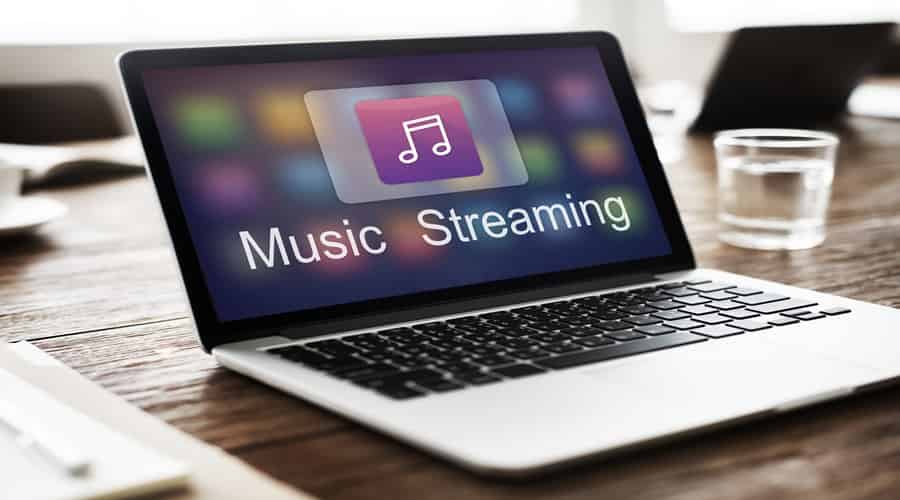
Unleash Your Creativity with the Best Music Production Software
In the dynamic realm of music production, possessing the appropriate software tools can greatly impact your workflow and the caliber of your output. With its many features and capacities, music production software has become an essential instrument for musicians in the current era, helping producers and artists realize their musical dreams. This extensive guide delves into music production software, emphasizing essential features, the best software choices, user experiences, cutting-edge methods, and upcoming trends.
Types of Music Production Software
Digital Audio Workstations (DAWs):
DAWs are comprehensive software packages for recording, editing, mixing, and producing music. They provide a centralized platform where musicians and producers can compose music, arrange tracks, apply effects, and finalize their productions.
Sequencers and MIDI Editors:
Sequencers and MIDI editors are tools for creating and manipulating musical sequences and MIDI (Musical Instrument Digital Interface) data. They allow users to sequence notes, control virtual instruments, and automate various aspects of music production.
Virtual Instruments and Synthesizers:
Virtual instruments and synthesizers simulate analog musical instruments and synthesizer modules within a digital context. They provide a wide array of tones and textures useful for creating rhythms, chords, and melodies.
Audio Editors and Sound Design Tools:
Audio editors and sound design tools are used for editing and manipulating audio recordings and samples. They provide features for trimming, cropping, stretching, and applying effects to audio files, enabling users to sculpt and refine their sounds with precision.
Mastering and Post-Production Software:
Mastering and post-production software is used to polish and finalize music productions before release. These tools provide specialized features for mastering audio tracks, including equalization, compression, limiting, and stereo imaging, to achieve a professional sound quality.
Key Features to Consider
Multitrack Recording and MIDI Sequencing:
Look for software that supports multitrack recording to record and edit many audio tracks at once. Make sure it also has strong MIDI sequencing features so you can use MIDI instruments and controllers to compose and arrange music.
Virtual Instruments and Sound Libraries:
Select software that gives you access to various virtual instruments, sound libraries, synthesizers, and realistic instrument sounds and samples. A wide range of excellent sounds will enhance your compositions and stimulate your imagination.
Audio Editing and Processing Capabilities:
Opt for software with comprehensive audio editing and processing features, such as waveform editing, time stretching, pitch correction, and noise reduction. These tools enable precise editing and manipulation of audio recordings to achieve the desired sound.
Mixing and Mastering Tools:
Look for software that includes mixing and mastering tools for balancing levels, applying effects, and enhancing the overall sound quality of your tracks. Features like EQ, compression, reverb, and mastering plugins are essential for achieving professional-sounding mixes.
Plugin Support and Compatibility:
Ensure the software supports third-party plugins and is compatible with popular plugin formats such as VST, AU, and AAX. Plugin support allows you to expand the software’s functionality by adding additional effects, instruments, and processing tools from third-party developers.
User Interface and Workflow Efficiency:
Consider the software’s user interface and workflow efficiency, as these factors significantly impact your productivity and creative process. Look for intuitive interfaces, customizable layouts, and streamlined workflows that allow you to work efficiently and focus on making music.
Top Music Production Software Tools
Here are some of the top music production software tools, along with their official websites:
Ableton Live
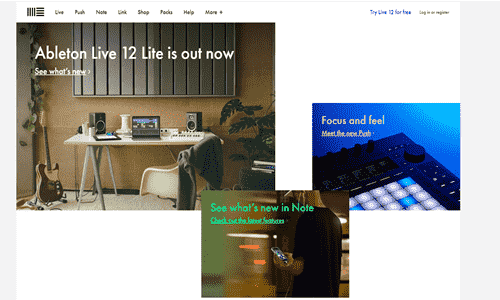
Popular digital audio workstation (DAW) Ableton Live is renowned for its robust capabilities and simple-to-use interface. Electronic music producers and live performers love it because it provides various tools for creating, recording, arranging, mixing, and playing music.
Logic Pro
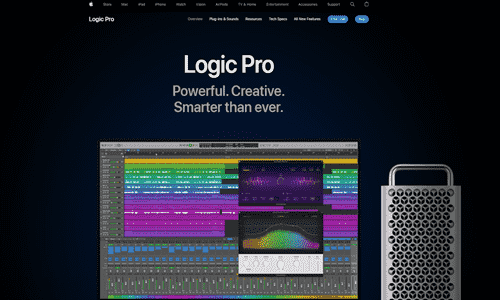
Apple created Logic Pro, a professional macOS music creation program. It offers an extensive toolkit for creating, recording, editing, mixing, and mastering music. Pro audio studios utilize Logic Pro extensively because of its vast virtual instruments, effects, and scary library.
Pro Tools
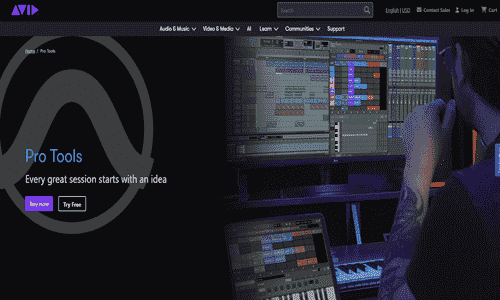
Pro Tools is an extensively utilized digital audio workstation (DAW in the audio production and music industry). It has sophisticated features for mixing, mastering, recording, editing, and suppvariousty of hardware and third-party plugins. Pro Tools is renowned for its dependability, adaptability, and audio quality, which meets industry standards.
FL Studio
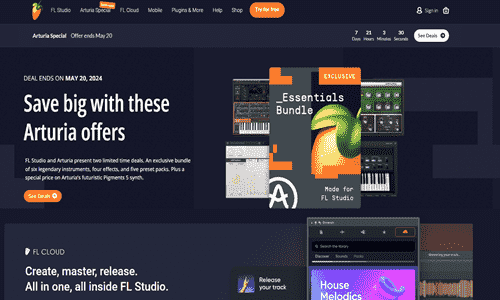
FL Studio, formerly known as FruityLoops, is a versatile music production software popular among electronic music producers and beatmakers. It features a user-friendly interface, various virtual instruments and effects, and powerful sequencing and arrangement tools. FL Studio supports both Windows and macOS platforms.
Studio One
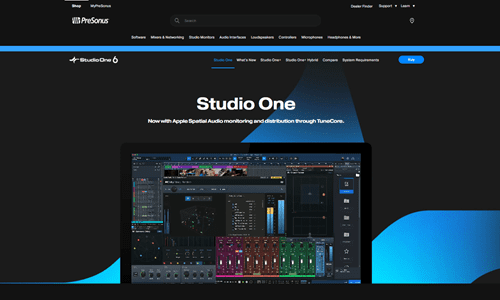
Studio One is a professional music production software developed by PreSonus. It offers a streamlined workflow, an intuitive drag-and-drop interface, and comprehensive features for composing, recording, editing, mixing, and mastering music. Studio One is available in different versions to suit user needs and budgets.
Reason
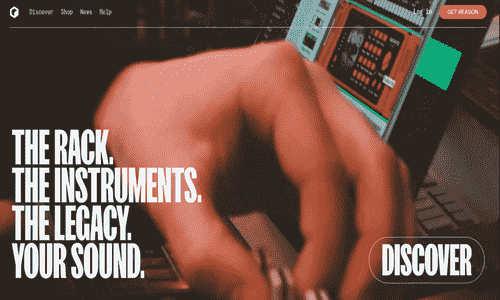
Reason is a digital audio workstation (DAW) and music production software developed by Reason Studios. It offers a modular rack-style interface, virtual instruments, effects, and powerful sequencing and mixing tools, allowing users to create, edit, and mix music easily.
Cubase
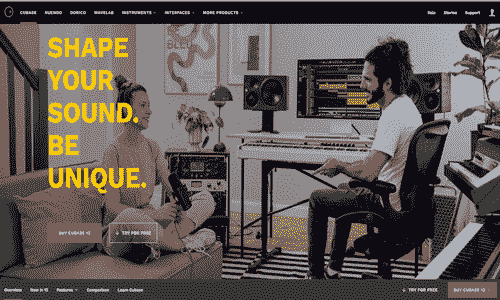
Cubase is a professional music production software developed by Steinberg for Windows and macOS. It features comprehensive tools for composing, recording, editing, mixing, and mastering music. Cubase is known for its advanced audio and MIDI capabilities, making it a favorite among composers, producers, and sound engineers.
Bitwig Studio
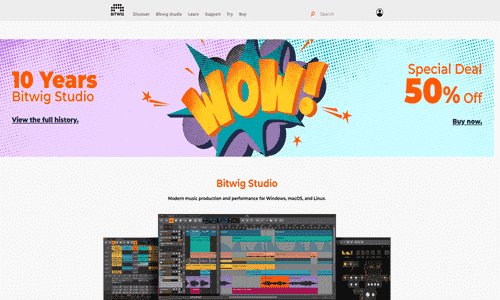
Bitwig Studio is a next-generation music production software known for its innovative features and modern workflow. It offers a hybrid modular design, flexible editing tools, and extensive MIDI and audio capabilities, empowering users to create and perform music in new and creative ways.
GarageBand
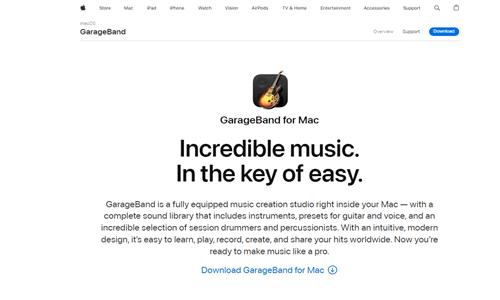
GarageBand is a beginner-friendly music production software developed by Apple for macOS and iOS devices. It offers a range of virtual instruments, pre-recorded loops, and easy-to-use recording and editing tools, making it ideal for beginners and hobbyists interested in music production.
Steinberg – Dorico
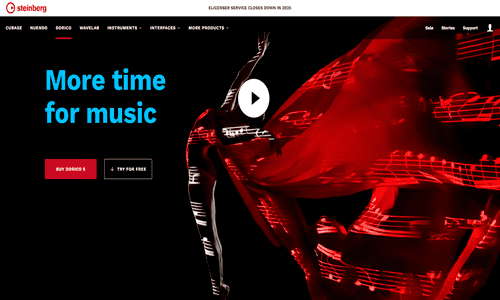
Dorico is a professional music notation software developed by Steinberg. It offers advanced scoring and engraving capabilities, intelligent input tools, and flexible formatting options, allowing composers, arrangers, and educators to create beautiful, professional-looking sheet music easily.
Comparison of Popular Options
Price:
GarageBand:
Free for macOS and iOS users.
FL Studio:
Offers various pricing tiers, including a free trial and paid versions with different feature sets.
Logic Pro:
Available for purchase with a one-time fee for macOS users.
Ableton Live:
Offers various pricing tiers, including a free trial and paid versions with different feature sets.
Pro Tools:
Available for purchase with a one-time fee or subscription-based pricing.
Features:
GarageBand:
Beginner-friendly interface with basic recording, editing, and mixing tools, suitable for hobbyists and beginners.
FL Studio:
Electronic music producers and beatmakers enjoy the extensive selection of virtual instruments, effects, and sequencing tools.
Logic Pro:
A comprehensive suite of professional-grade tools for composing, recording, editing, mixing, and mastering music favored by professional producers and composers.
Ableton Live:
Innovative workflow with powerful MIDI sequencing, sampling, and performance features, ideal for electronic music production and live performances.
Pro Tools:
Industry-standard software with advanced recording, editing, mixing, and mastering capabilities, widely used in professional recording studios and post-production facilities.
Compatibility:
GarageBand:
Exclusive to macOS and iOS devices.
FL Studio:
Available for Windows and macOS.
Logic Pro:
Exclusive to macOS.
Ableton Live:
Available for Windows and macOS.
Pro Tools:
Available for Windows and macOS.
Ease of Use:
GarageBand:
Beginner-friendly interface with intuitive controls and built-in tutorials.
FL Studio:
User-friendly interface with drag-and-drop functionality and customizable workflow.
Logic Pro:
Intuitive interface with extensive documentation and online resources for learning.
Ableton Live:
Innovative session and arrangement views with intuitive MIDI and audio editing tools.
Pro Tools:
Professional-grade interface with advanced features and customizable workflows.
Reviews and User Experiences
Reviews and user experiences are crucial in helping individuals choose the right music production software for their needs. Here’s a summary of common feedback from users:
GarageBand:
Pros:
Beginner-friendly interface, included with macOS and iOS devices, extensive library of virtual instruments and loops.
Cons:
Limited advanced features compared to professional-grade software, exclusive to Apple devices.
FL Studio:
Pros:
Many virtual instruments and effects, a user-friendly interface, regular updates, and enhancements.
Cons:
The learning curve for beginners, the interface may feel cluttered to some users.
Logic Pro:
Pros:
Comprehensive feature set for professional music production, intuitive interface, and seamless integration with other Apple products.
Cons:
Exclusive to macOS may be overwhelming for beginners due to the abundance of features.
Ableton Live:
Pros:
Innovative session and arrangement views, powerful MIDI sequencing and performance features, and an extensive library of built-in instruments and effects.
Cons:
There is a steeper learning curve than in other programs, and the full version costs more.
Pro Tools:
Pros:
Industry-standard software used in professional studios, advanced recording, editing, and mixing capabilities, and extensive plugin support.
Cons:
A higher price point may require additional hardware for optimal performance, and it is less intuitive for beginners than some other software.
Tips for Using Music Production Software
Optimize Your Computer Setup:
Ensure your machine meets the system requirements so the software can run without issue. If necessary, consider improving hardware elements like RAM, CPU, and storage. To further enhance performance, reduce background processes, and optimize your system settings.
Explore Built-in Tutorials and Resources:
Take advantage of built-in tutorials, documentation, and online resources the software manufacturer provides. These resources can familiarize you with the software’s features, tools, and workflows, enabling you to make the most out of your music production software.
Customize Your Workflow and Shortcut Keys:
Customize your workflow by creating personalized templates, presets, and shortcut keys tailored to your preferences and workflow. This can help you streamline repetitive tasks, speed up your workflow, and increase productivity while working on music projects.
Develop a Solid Understanding of Audio Fundamentals:
Invest time learning the fundamentals of audio recording, editing, mixing, and mastering. Develop an understanding of concepts such as signal flow, EQ, compression, reverb, and stereo imaging, as these skills are essential for achieving professional-quality results in music production.
Collaborate and Learn from the Community:
Engage with the music production community through online forums, social media groups, and local meetups. Collaborate with other musicians, producers, and audio engineers to exchange ideas, share feedback, and learn from each other’s experiences. Networking with peers can provide valuable insights, inspiration, and support throughout your music production journey.
Advanced Techniques and Tips
Advanced MIDI Editing:
Explore advanced MIDI editing techniques such as quantization, humanization, velocity scaling, and MIDI expression mapping. These techniques allow for more nuanced and expressive MIDI performances, enhancing the realism and musicality of your compositions.
Automation and Parameter Modulation:
Learn to utilize automation and parameter modulation to control various parameters over time dynamically. Experiment with automating effects, plugin parameters, mixer settings, and instrument parameters to add movement, depth, and complexity to your tracks.
Parallel Processing and Bus Routing:
Implement parallel processing and bus routing techniques to create more polished and cohesive mixes. Use parallel compression, distortion, and reverb sends to add depth, texture, and impact to individual tracks and entire mixes.
Advanced Audio Editing and Time Stretching:
Master advanced audio editing techniques such as time stretching, pitch shifting, and spectral editing to manipulate audio recordings with precision and creativity. Explore time-stretch algorithms, transient editing tools, and advanced pitch correction plugins to correct imperfections and transform audio recordings.
Creative Sound Design and Synthesis:
Dive deeper into sound design and synthesis to create unique and innovative sounds for your productions. Experiment with advanced synthesis techniques such as wavetable synthesis, granular synthesis, and FM synthesis to design custom sounds and textures that set your music apart.
Mastering and Finalizing Your Mixes:
Learn the art of mastering to polish and finalize your mixes for commercial release. Explore mastering tools and techniques such as multiband compression, stereo widening, harmonic enhancement, and loudness maximization to achieve a professional and cohesive sound across all your tracks.
Collaboration and Networking:
Collaborate with other musicians, producers, and audio engineers to gain new perspectives, insights, and skills. Network with industry professionals, attend workshops and conferences and participate in online communities to stay informed about the latest trends, technologies, and best practices in music production.
Troubleshooting and Common Issues
Check System Requirements:
Ensure your computer meets the minimum system requirements specified by the software manufacturer. Inadequate hardware or outdated operating systems may cause performance issues or software crashes.
Update Software and Drivers:
Update your music production software to the latest version, as newer versions often include bug fixes and performance improvements. Additionally, ensure your audio and system drivers are up-to-date to maintain compatibility and stability.
Restart Your Computer and Software:
Restarting your computer and music production software can sometimes resolve temporary glitches or memory leaks that may be causing issues.
Disable Plugins and External Devices:
If experiencing crashes or instability, try turning off third-party plugins or disconnecting external MIDI devices and audio interfaces to isolate the issue. Faulty plugins or incompatible hardware may cause conflicts with the software.
Adjust Buffer Size and Sample Rate:
Adjust your audio preferences, buffer size, and sample rate settings to maximize system performance and reduce latenSmallerower buffer sizes may reduce latency but may increase CPU consumption. At the same time, larger buffer sizes can lessen CPU strain but may also increase latency.
Check Disk Space and CPU Usage:
Ensure your hard drive has sufficient free space for recording and saving audio files. Monitor CPU usage to identify any processes or applications consuming excessive resources that may impact the performance of your music production software.
Reinstall or Repair Software:
If problems persist, consider fixing or reinstalling the music-producing program. Follow the manufacturer’s instructions to remove the software, then install it again from a reputable source.
Seek Technical Support:
If unable to resolve the issue independently, contact technical support or browse online forums and user communities for assistance. To facilitate troubleshooting, provide detailed information about the problem, including error messages, software version, and operating system.
Future Trends in Music Production Software
AI-Powered Tools and Assistants:
We are integrating artificial intelligence (AI) and machine learning (ML) algorithms to assist users in various aspects of music production, such as automatic composition, intelligent mixing suggestions, and personalized workflow optimizations.
Cloud-Based Collaboration:
Expanding cloud-based collaboration functionalities enable real-time remote project collaboration between engineers, producers, and musicians. Cloud-based storage and project sharing will make remote music production easier, streamlining collaborative processes.
Immersive Audio and Spatial Processing:
Spatial audio processing and object-based mixing are two examples of immersive audio technologies that provide listeners with an immersive experience. Software for music production that uses augmented reality (AR) and virtual reality (VR) for spatial audio design may become more prevalent.
Blockchain for Royalty Management:
Adoption of blockchain technology for tracking music rights and transparent, decentralized royalty administration. Blockchain-driven systems have the potential to offer safe, unchangeable ledgers for recording copyrights, royalties, and music ownership, guaranteeing equitable compensation for authors and other rights holders.
Gesture-Based Interfaces and Control:
Development of gesture-based interfaces and control mechanisms that enable intuitive and expressive interaction with music production software. Gesture recognition technology, touchless interfaces, and motion sensors may allow users to manipulate sounds and control parameters through natural movements and gestures.
Integrated Machine Learning Plugins:
Integrating machine learning plugins within music production software offers intelligent tools for audio analysis, content classification, and sound processing. These plugins can automate repetitive tasks, identify musical patterns, and suggest creative ideas to users, enhancing productivity and creativity.
Real-Time Collaboration with AI Musicians:
AI-generated musicians and virtual bandmates who can collaborate with human musicians in real-time have emerged. AI musicians with advanced generative models and natural language processing capabilities can improvise, respond to cues, and contribute to musical compositions alongside human collaborators.
Licensing and Pricing Models
One-Time Purchase:
Users make a one-time payment to obtain a perpetual license for the program. This model provides perpetual access to the software version purchased and any updates or patches made available within a designated period. In the future, users might have to pay more to update to later versions.
Subscription-Based:
Users must pay a recurring subscription charge to access the program for a set period—such as monthly or annually. Subscription-based models frequently include regular updates, customer service, and access to extra features or material. If a user’s subscription is not renewed after it expires, they lose access to the software.
Freemium:
The software is free with limited functionality or features, enticing users to upgrade to a premium version for additional benefits. Freemium models often offer a basic version of the software for free, with the option to purchase premium features or unlock advanced functionality through in-app purchases or subscription upgrades.
Tiered Pricing:
Software is available in multiple pricing tiers or editions, each offering different features, capabilities, and pricing options. Users can choose the tier that best fits their needs and budget, with higher-priced tiers typically offering more advanced features or additional bundled content.
Educational and Academic Licensing:
Special pricing and licensing options are available for educational institutions, students, and faculty members. Educational licenses may offer discounted rates or free access to software for educational purposes, with commercial use or distribution restrictions.
Volume Licensing:
Businesses, organizations, or institutions can purchase multiple software licenses at a discounted rate through volume licensing programs. Volume licensing agreements typically offer flexible pricing, centralized management, and support for large-scale deployments across multiple users or devices.
Pay-Per-Use:
Users pay a fee based on their actual usage or consumption of the software, such as the number of hours used or the amount of data processed. Pay-per-use models offer flexibility and cost control, allowing users to pay only for the resources they consume without committing to fixed-term subscriptions or licenses.
Community and Support Resources
Official Forums and User Communities:
Most music production software suppliers provide official forums and user communities to facilitate communication between users and allow them to exchange advice and pointers. Representatives from the company and seasoned users who can offer advice and support keep an eye on these forums.
Online Tutorials and Video Guides:
Many manufacturers of music production software provide thorough online tutorials, instructional videos, and documentation for users who wish to learn the ins and outs of their program. These resources address various subjects, from complex methods and techniques to basic setup and navigation.
Social Media Groups and Channels:
Users can join social media groups, pages, and channels dedicated to music production software to interact with other users, share their work, and stay updated on the latest news and developments—platforms like Facebook, Reddit, and YouTube host active communities of music producers and enthusiasts.
User-Generated Content and Forums:
Online forums, blogs, and websites dedicated to music production often feature user-generated content, tutorials, and discussion threads related to specific software platforms. These resources provide valuable insights, techniques, and troubleshooting tips from experienced users and industry professionals.
Technical Support and Help Centers:
Music production software providers offer technical support through help centers, knowledge bases, and dedicated support channels. Users can submit support tickets, contact support representatives via email or live chat, or access self-help resources to resolve issues and get assistance with software-related inquiries.
Workshops, Webinars, and Events:
Software providers and third-party organizations host workshops, webinars, and events on music production techniques, software features, and industry trends. These events offer users opportunities to learn from experts, participate in hands-on training sessions, and network with peers.
Local User Groups and Meetups:
Users can join local user groups and meetups organized by music production enthusiasts in their area. These gatherings provide opportunities for face-to-face interaction, collaboration, and knowledge sharing among like-minded individuals.
Legal Considerations for Music Production
Copyright Clearance:
Obtain proper clearance for all copyrighted material in your music productions, including samples, loops, melodies, lyrics, and recordings. Ensure you have the licenses or permissions from the copyright holders to use their work in your compositions.
Royalty Payments and Licensing:
Understand the different types of royalties and licensing agreements associated with music production, including mechanical royalties, performance royalties, synchronization licenses, and master use licenses. Ensure you obtain the appropriate licenses and pay the royalties for any commercial use of copyrighted material.
Sample Clearance and Clearance Services:
If using samples or loops in your music productions, ensure they are cleared for commercial use and do not infringe on the rights of the original creators. Consider using sample clearance services or libraries that provide pre-cleared samples and loops to avoid legal issues.
Work-for-Hire Agreements:
Work-for-hire agreements or collaboration agreements can define ownership rights, royalties, and distribution rights for music compositions created during collaborations with producers, singers, and other musicians. To avoid future problems, clearly state each party’s rights and duties.
Publishing and Distribution Agreements:
Consider partnering with record labels, digital distribution platforms, or music publishers to release your music commercially on publishing and distribution deals. Carefully read the terms and conditions of these agreements to guarantee that you maintain ownership of your intellectual property and are fairly compensated for your work.
Trademark Protection:
Consider trademarking your band name, artist name, or record label name to protect your brand identification and prevent others from using names that confuse fans or customers. Consult a trademark attorney to file trademark applications and safeguard your brand rights.
Digital Rights Management (DRM):
Implement digital rights management (DRM) technologies or strategies to protect your music from unauthorized distribution, copying, or piracy. Explore options such as encryption, watermarking, and content protection mechanisms to safeguard your intellectual property rights in the digital domain.
FAQs
What is the difference between a DAW and a sequencer?
A sequencer is generally used for creating and organizing MIDI data for virtual instruments and synthesizers. Still, a digital audio workstation (DAW) is a complete software solution for recording, editing, mixing, and mastering audio.
Do I need a powerful computer to run music production software?
While modern music production software can run on modest hardware, having a powerful computer with a fast CPU, ample RAM, and a dedicated GPU can significantly improve performance, especially when working with complex projects or resource-intensive plugins.
Can I use music production software for live performances?
Many music production software tools, such as Ableton Live and FL Studio, are designed for live performance. They offer features like clip launching, real-time mixing, and integration with hardware controllers.
How important are plugins in music production?
Plugins are essential in music production. They provide additional processing capabilities, virtual instruments, and creative effects that can greatly enhance your workflow and sound palette. Most music production software supports third-party plugin standards like VST and AU.
What are some legal considerations when using samples or loops?
It is important to ensure you have the appropriate rights or licenses before using samples or loops from other sources. If you don’t, there may be problems with copyright infringement.
Conclusion
In conclusion, music production software is indispensable for modern music creation. It offers a versatile platform for artists, producers, and enthusiasts alike to unleash their creativity and bring their musical visions to life. With various features ranging from virtual instruments and effects to advanced recording and editing capabilities, these software solutions empower users to explore endless sound design, composition, and production possibilities. Moreover, as technology continues to evolve, music production software evolves alongside it, constantly innovating to meet the ever-changing needs and demands of the music industry. Whether crafting professional-grade tracks in a professional studio or experimenting with new sounds in a home setup, music production software remains at the forefront of music-making, driving innovation and shaping the future of music creation.




